Top Rankings
Ferndale Unified School District ranks among the top 20% of public school district in California for:
Category
Attribute
Student Attention
Lowest student:teacher ratio (Top 1%)
For the 2025 school year, there is 1 public middle school serving 349 students in Ferndale Unified School District. This district's average middle testing ranking is 7/10, which is in the top 50% of public middle schools in California.
Public Middle School in Ferndale Unified School District have an average math proficiency score of 38% (versus the California public middle school average of 31%), and reading proficiency score of 43% (versus the 46% statewide average).
Minority enrollment is 28% of the student body (majority Hispanic), which is less than the California public middle school average of 78% (majority Hispanic).
Overview
This School District
This State (CA)
# Schools
2 Schools
3,501 Schools
# Students
482 Students
1,854,363 Students
# Teachers
31 Teachers
87,821 Teachers
Student : Teacher Ratio
16:1
16:1
District Rank
Ferndale Unified School District, which is ranked #677 of all 1,925 school districts in California (based off of combined math and reading proficiency testing data) for the 2021-2022 school year.
The school district's graduation rate of 90% has stayed relatively flat over five school years.
Overall District Rank
#701 out of 1941 school districts
(Top 50%)
(Top 50%)
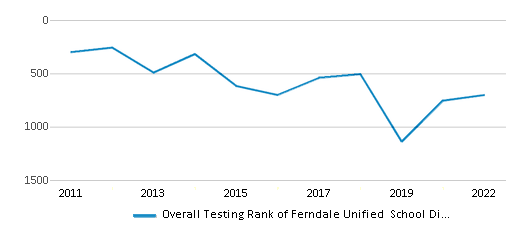
Math Test Scores (% Proficient)
38%
33%

Reading/Language Arts Test Scores (% Proficient)
45%
47%
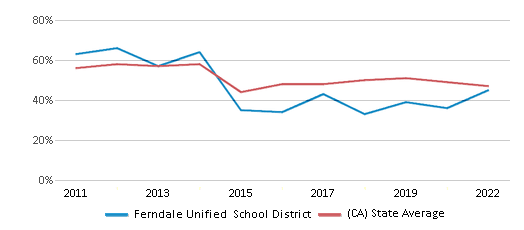
Science Test Scores (% Proficient)
20-24%
29%
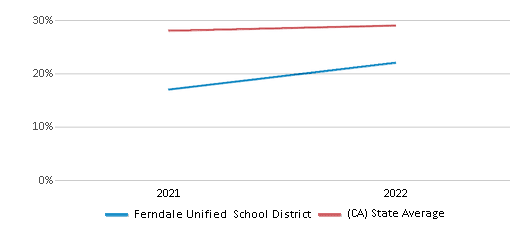
Graduation Rate
≥90%
87%
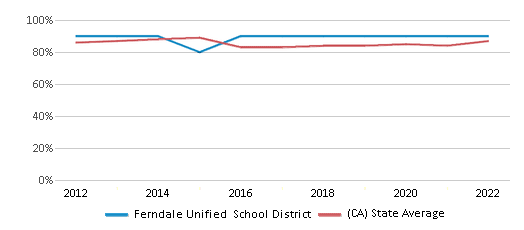
Students by Ethnicity:
Diversity Score
0.45
0.64
# American Indian Students
20 Students
9,887 Students
% American Indian Students
4%
1%
# Asian Students
3 Students
201,760 Students
% Asian Students
1%
11%
# Hispanic Students
104 Students
1,009,980 Students
% Hispanic Students
22%
55%
# Black Students
2 Students
97,908 Students
% Black Students
n/a
5%
# White Students
343 Students
413,325 Students
% White Students
71%
22%
# Hawaiian Students
n/a
7,600 Students
% Hawaiian Students
n/a
n/a
# Two or more races Students
9 Students
109,003 Students
% of Two or more races Students
2%
6%
Students by Grade:
# Students in PK Grade:
-
83
# Students in K Grade:
49
90,358
# Students in 1st Grade:
31
70,728
# Students in 2nd Grade:
37
73,359
# Students in 3rd Grade:
32
73,090
# Students in 4th Grade:
43
76,068
# Students in 5th Grade:
36
82,191
# Students in 6th Grade:
37
289,122
# Students in 7th Grade:
39
439,549
# Students in 8th Grade:
45
441,705
# Students in 9th Grade:
40
59,696
# Students in 10th Grade:
31
51,846
# Students in 11th Grade:
27
51,149
# Students in 12th Grade:
35
55,419
# Ungraded Students:
-
-
District Revenue and Spending
The revenue/student of $16,098 in this school district is less than the state median of $19,974. The school district revenue/student has declined by 5% over four school years.
The school district's spending/student of $13,834 is less than the state median of $18,396. The school district spending/student has declined by 5% over four school years.
Total Revenue
$8 MM
$116,387 MM
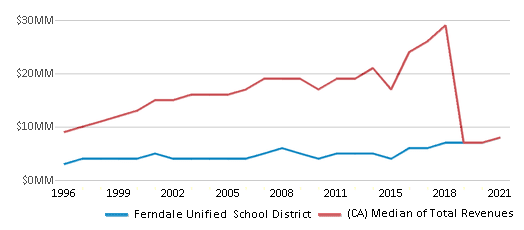
Spending
$7 MM
$107,188 MM
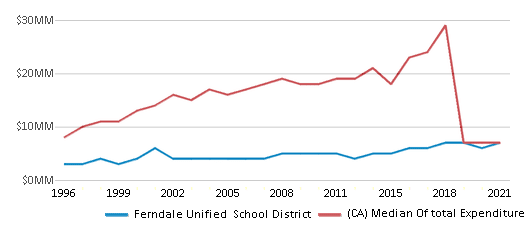
Revenue / Student
$16,098
$19,974
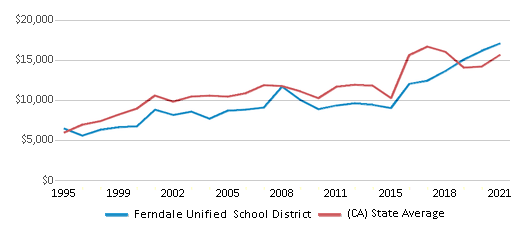
Spending / Student
$13,834
$18,396
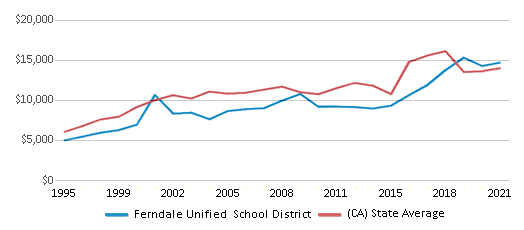
Best Ferndale Unified School District Public Middle Schools (2025)
School
(Math and Reading Proficiency)
(Math and Reading Proficiency)
Location
Grades
Students
Rank: #11.
Ferndale Elementary School
(Math: 38% | Reading: 43%)
Rank:
Rank:
6/
Top 50%10
164 Shaw Ave.
Ferndale, CA 95536
(707) 786-5300
Ferndale, CA 95536
(707) 786-5300
Grades: K-8
| 349 students
Recent Articles

Year-Round Or Traditional Schedule?
Which is more appropriate for your child? A year-round attendance schedule or traditional schedule? We look at the pros and cons.

Why You Should Encourage Your Child to Join a Sports Team
Participating in team sports has a great many benefits for children, there is no doubt. In this article you will learn what those benefits are.

White Students are Now the Minority in U.S. Public Schools
Increasing birth rates among immigrant families from Asia and Central and South America, combined with lower birth rates among white families, means that for the first time in history, public school students in the United States are majority-minority. This shift in demographics poses difficulties for schools as they work to accommodate children of varying language abilities and socio-economic backgrounds.





